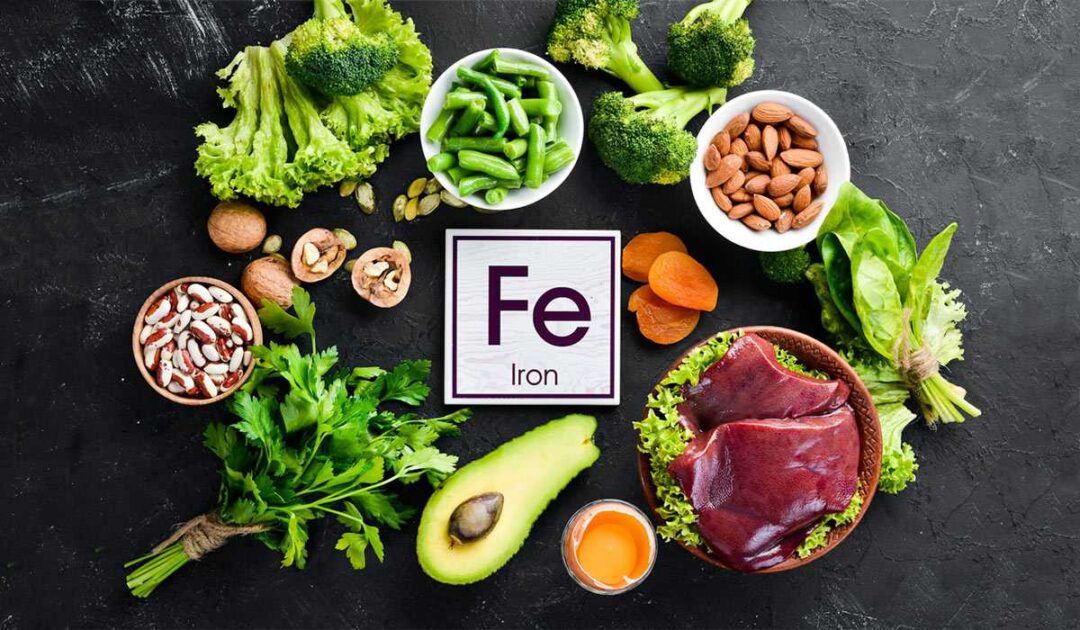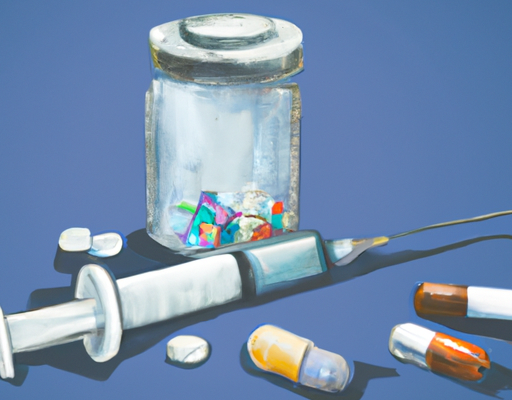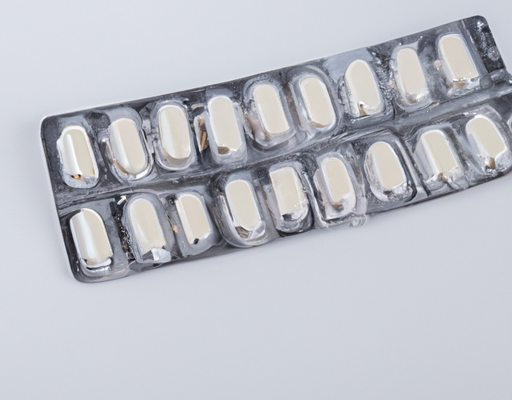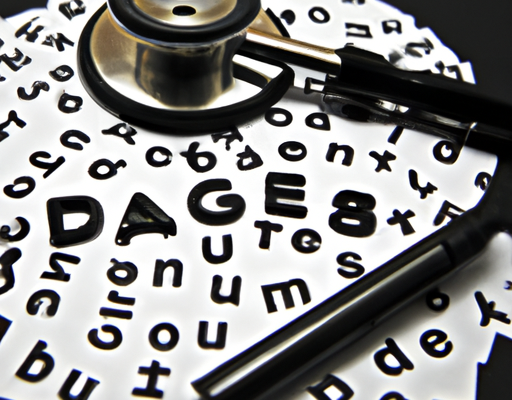Iron is responsible for many processes, among the main ones are delivering oxygen to the organs, regulating breathing, and metabolism. The body does not produce iron itself, a person receives 1-2 mg of this element together with food. Approximately the same amount each of us loses with the dead cells of the skin and intestines.
Functions of Iron
Iron helps maintain many important functions of the body, affecting the level of life energy, concentration, digestive and intestinal processes, immune system and body temperature regulation. Its deficiency or excess is immediately felt in one’s well-being.
Exchange Processes
Iron is an important component of hemoglobin, consisting of red blood cells (erythrocytes). Hemoglobin contains about two-thirds of iron in the body. It binds to oxygen, and erythrocytes spread it from the lungs throughout the body. This mineral is also involved in many elements that regulate cholesterol metabolism, calorie processing into energy, fighting toxins. Thanks to iron with its functions, the immune system works better, and erythrocytes with its help send the carbon dioxide gas to the lungs for processing. It is also necessary to maintain the health of cells, skin, hair and nails.
Pregnancy
During pregnancy, the amount of fluid in a woman’s body increases. Due to this, the volume of blood and the production of erythrocytes that are needed to provide the fetus with oxygen and necessary substances increase sharply. The blood becomes thinner, the hemoglobin level decreases. The body consumes iron to the maximum. The deficiency of the mineral can lead to premature birth, low weight of the baby after birth, as well as to its cognitive development disorder. Pregnant women with iron deficiency are more prone to infectious diseases, as it negatively affects the immune system.
Energy
Insufficient amount of iron in the diet can affect the efficiency with which the body uses energy. Thanks to the role of a carrier of oxygen to muscles and brain, iron plays an important role in mental and physical activity. Low levels of this element can lead to problems with concentration, irritability, and decreased endurance.
Iron norm
Recommended daily iron intake depends on age, gender, lifestyle and health status.
Children need more iron than adults: during growth and body formation, any useful substances are spent much faster. The daily norm depends on the child’s age: 4-8 years – 10 mg, 9-13 years – 8 mg. Starting from the teenage age, when girls start menstruating, their daily iron requirement increases.
Women aged 19-50 should get 18 mg of iron per day, while men of the same age need only 8 mg [3]. After menopause, the daily iron norm for women is equal to the male one – 8 mg per day.
Sometimes a person needs more iron than usual. Monitor iron levels in the blood during pregnancy and lactation, kidney failure, ulcers or gastrointestinal disorders that prevent normal mineral absorption. In case of deficiency, consult a doctor.
Athletes should pay special attention to iron level, as intense training can destroy red blood cells. Vegetarians and vegans should also monitor this parameter, as iron from plant food is not absorbed enough.
Iron deficiency.
If an iron deficiency occurs, the tissues and muscles no longer receive the necessary amount of oxygen that helps them function effectively. This can lead to anemia.
Reasons why anemia may occur:
- insufficient iron intake with food;
- decreased iron absorption due to gastrointestinal tract disorders;
- increased iron needs during pregnancy;
- excessive blood loss (e.g. during menstruation).
Iron levels can also be reduced during external and internal bleeding, operations with blood loss, frequent donation. Anorexia and chronic diseases associated with impaired iron absorption can also affect the level of this mineral. The risk of deficiency is also increased during active child growth, when taking anticoagulants and antiaggregants. Anemia can also be caused by irregular nutrition, a meager and monotonous diet, as well as nutrition based on vegetarian and vegan schemes.
Iron deficiency leads to symptoms that can significantly affect the quality of life. Symptoms of its deficiency in the body are different depending on the severity of anemia, the speed of its development, age, health status. In some cases, people do not experience any symptoms for a long time.
Symptoms of Iron Deficiency
- Increased fatigue, feeling of extreme tiredness. When body lacks iron to produce hemoglobin which distributes oxygen throughout the body, many tissues and organs don’t get enough energy.
- Dizziness, ringing in ears, headaches, fainting, flashes of “flies” in front of eyes, memory impairment.
- Tachycardia, increased heart rate during and without load. Due to lack of oxygen in tissues, the heart needs to work harder to compensate for the deficit and drive more oxygen-rich blood. Since this state can be a symptom of various diseases, diagnosing iron deficiency only by this sign is quite difficult and requires a comprehensive examination.
- Pallor. Waxy color of the face or pale discoloration of the inner surface of the lower eyelids is a frequent sign of iron deficiency. It can appear both throughout the body and only on the face, gums or other parts of the body. Most often pallor appears in cases of moderate and severe anemia.
- Changes in nails, hair fragility. Flat or curved sections appear on brittle nails.
- Shortness of breath. Due to low hemoglobin level, the oxygen level in the blood decreases, so the breathing frequency increases – so the body tries to make up the deficit. If usual physical activities that used to be done without effort suddenly start to cause difficulty breathing, a doctor should be consulted.
- Changes in taste and smell. Damage to the mucous membrane of the mouth, tongue and lips. Swollen tongue, unpleasant sensations in the oral cavity (dryness, burning), ulcers on the mucous membrane, cracks in the corners of the lips may be a sign of anemia.
- Restless leg syndrome. Strong desire to move legs in a state of rest, unpleasant and strange sensations of itching in the legs, which makes it hard to fall asleep, can be a symptom of iron deficiency. The causes of this condition are not fully studied, but about 25% of people with iron-deficiency anemia have restless leg syndrome.
Also, the following symptoms are seen with iron deficiency:
- headaches, dizziness;
- rapid heart rate;
- dry, damaged hair, skin, and nails;
- the urge to eat non-edible items (ice, clay, dirt, chalk, paper);
- cold hands and feet;
- a feeling of depression and lethargy;
- frequent infections.
Long-term iron deficiency anemia can lead to serious consequences. The cardiovascular and digestive systems are affected, and gradual muscle atrophy can occur. Women may experience menstrual cycle abnormalities, and during pregnancy there is a risk of miscarriage and premature birth.
Excess of iron
Like any substance, in large quantities iron can be toxic to the body. The hormone hepcidin is responsible for the process of regulating and maintaining its balance. Some disorders that suppress hepcidin production can lead to mineral poisoning.
In a normal state, very little free iron circulates in the blood, as it is tightly bound to proteins. When it accumulates in cells, it catalyzes harmful processes. Oxidation of fats is accelerated, leading to the formation of free radicals. These are oxygen atoms with a high oxidizing ability that damage cell organelles (permanent cell elements necessary for its existence) and their walls.
Excess of this element is much less common than deficiency. Overdose can occur suddenly or gradually over a long period of time.
Such a condition can be caused by:
- Poisoning with iron. It occurs with an overdose of iron supplements, their uncontrolled intake without taking into account the doctor’s recommendations and the results of blood tests. Single doses up to 10-20 mg / kg can cause side effects, and doses above 40 mg / kg require medical help.
- Inherited hemochromatosis. This is a genetic disorder characterized by impaired iron metabolism and accumulation of iron in cells of various organs.
- So-called African iron overload. This syndrome is caused by a high level of iron in food or drinks. It was first observed in Africa, where home beer was brewed in iron pots.
Early symptoms of iron poisoning may include abdominal pain, nausea and vomiting. Gradually, the excess mineral accumulates in the internal organs, causing serious damage to the brain and liver.
Products with iron
There are two main types of iron found in food products: heme and non-heme.
Heme iron comes from animal proteins – meat or fish. Non-heme iron can be obtained from greens, nuts, beans, but its bioavailability is only 5-12%, while heme iron is 14-18%. Iron from animal-based products is absorbed by the body better than from plant sources.
The richest sources of heme iron are mollusks, meat by-products, red meat, poultry and eggs. Chocolate contains a large portion of iron – 19% of the daily allowance in 28 g.
For vegans and vegetarians, sources of iron can be buckwheat, lentils, pomegranate, quinoa, beans, spinach.
It is important to consume food containing iron properly. Products rich in this mineral are well combined with fruits and vegetables with a high level of vitamin C. Such a neighborhood increases iron absorption. Products rich in calcium, on the other hand, suppress iron absorption, so it is better to consume them at different times.
Iron and vitamin supplements
Everyone should eat a balanced diet at all times, regardless of the level of iron in their blood. However, in the case of anemia, a marked decrease in ferritin or iron levels, one diet is not enough.
When the iron level or iron deficiency anemia is low, the doctor prescribes special medications that will help improve the situation. Adequate drug therapy complements dietary recommendations and allows you to quickly achieve normal iron exchange parameters in the blood. It is necessary to control not only the hemoglobin level, but also iron, ferritin, iron-binding capacity of the blood.
It is necessary not only to achieve a normal level of all iron exchange indicators, but also to constantly maintain it. Iron preparations or dietary supplements with iron content can help with this. They differ in dosage, tolerability and effect on the gastrointestinal tract. The choice is now quite large – a therapist can help you not to make a mistake.
To improve iron absorption, iron-containing dishes should be consumed together with products rich in ascorbic acid (blackcurrant, red bell pepper, sea buckthorn, green onion, grapefruit) and copper (cherry, fig, buckwheat, oatmeal, spinach, salad).
It should be noted that if iron-containing dishes are diluted with tea or milk, the absorption of the mineral is reduced more than twofold. It is better to dilute them with fruit and vegetable juices, which contain a lot of copper, ascorbic acid and organic acids that improve iron absorption.
Expert’s comment
Unfortunately, women with iron deficiency often remain in this state for a long time, suffer from nonspecific symptoms such as tachycardia, dizziness, general weakness, hair loss. They visit doctors of various specialties: cardiologists, neurologists, dermatologists, undergo many additional types of examinations, but still do not get the simple and effective treatment they need. If a woman of childbearing age goes to a doctor of any specialty with the above nonspecific symptoms, then the diagnostic search should start with an iron deficiency state.
Iron deficiency can be corrected quite quickly, there are doctors with an impressive arsenal of tablet, liquid, parenteral drug forms, as well as dietary supplements. After correcting the iron deficiency state, many patients regret that their quality of life has suffered so much for so many years, they were in a reduced resource state, while they could be helped quite quickly and simply.
Among male patients, iron deficiency anemia occurs ten times less often than in women. Donors who regularly donate blood are also considered to be a zone of special attention. They also sometimes need to be prescribed iron in an adequate dose. For all other representatives of the strong sex (without known chronic diseases), of course, the risk of iron excess is higher than its deficiency. Therefore, the self and unjustified use of iron preparations by young healthy men is not only useless but also dangerous.
When the target indicators of iron exchange on the background of drug administration are achieved (the goal of iron deficiency anemia is to introduce iron in an amount necessary to normalize the hemoglobin level: in women 120-140 g / l, in men 130-160 g / l) and replenishment of tissue iron reserves (serum ferritin> 40-60 mcg / l), the task arises to fix the result. For this, prophylactic (course) appointment of iron preparations is necessary for risk groups: women with abundant me/metrorrhagia, blood donors, vegans, patients with chronic diseases of the gastrointestinal tract.
It is very important when detecting anemia not only to prescribe iron-containing drugs, but also to identify the cause of the deficiency, so as not to miss the debut of a dangerous, including oncological, disease. Having excluded a life-threatening pathology, you can calmly and methodically correct iron exchange until normal values and prevention of its deficiency are achieved.





No Comments